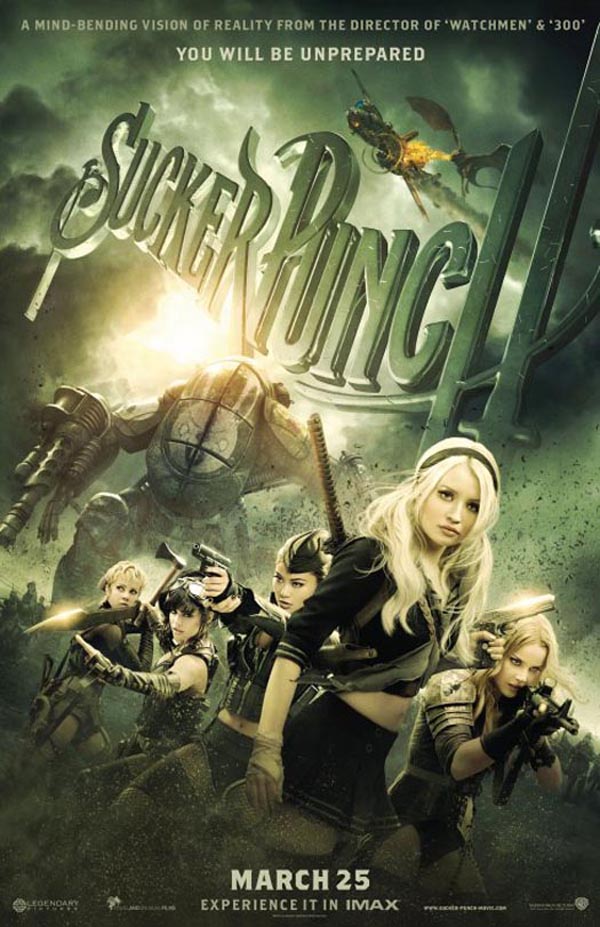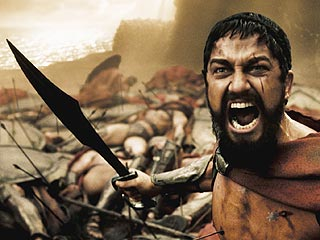
SALON: This movie is going to be vehemently attacked as brain-damaged garbage that exemplifies everything that’s wrong with today’s filmmaking and today’s audiences. It’s also going to be vigorously defended as a subversive action-movie masterpiece that offers a big middle finger to Hollywood convention, audience expectations, and anybody and everybody who would rather watch “The King’s Speech.” People on both sides will be partly right and partly wrong. Here’s where I come down: “Sucker Punch” doesn’t all work by a long shot, but it confirms my sense that Snyder belongs near the top of a very short list of directors who are trying to reinvent a personal, auteurist vision of cinema at the most commercial, mass-market, attention-disordered end of the spectrum. First and most obviously, “Sucker Punch” is on one level exactly what it looks like: an unzipped geek-boy fantasy about a posse of scantily clad hookers engaged in video-game style throwdowns with a villainous array of robots, monsters and dragons. You could say that Snyder tries to walk a fine line between softcore exploitation and girl-power feminism, but it’s more like he takes a big fat grade-school eraser and smudges that line into meaninglessness. Anyway, there can be no doubt that he really, really digs directing fight sequences, and as in “Watchmen” and “300,” he commands a team that delivers the best effects in the business. At their worst, these interludes offer adrenalized action cinema that’s well above average, and at their best — like an imaginary version of World War I trench warfare, featuring zombie German soldiers reanimated with clockwork and steam power, enormous dirigible warships and a Pokémon-style Japanese battlebot — they verge on demented visionary genius. MORE
NEW YORK TIMES: These days Comic-Con is like a pop-culture auto show — it’s where an industry rolls out glimpses of new product in order to hype it to, and beta-test it on, an audience of superenthusiasts before unleashing it on the wider world. The appeal is pretty obvious: if you’ve got a movie to sell, you can either send a researcher out to the mall to buttonhole shoppers in between the Footaction and the Mrs. Fields, or you can catch a flight down to San Diego and go to a place where the collective response to, say, the image of Ryan Reynolds dressed as Green Lantern can be not just gauged but practically applause-metered. And in an age of hyperengaged niche fandom — when a scathing blog post about costume designs visible for half a second in a leaked trailer can have as much effect on a film’s buzz as the kind of marketing studios can actually control — it pays to make the geeks feel loved. So the movie people go down to San Diego, taking exclusive advance teases of movies they’ve invested millions in creating, and they breathe the vapors of the San Diego Convention Center’s cavernous Hall H, where the big movie presentations happen, and they witness the excitement of the fans gathered therein, and they in  turn get a little excited themselves. [In] the era of geek cinema, you have to be able to sell yourself to Hall H, and to the vast virtual Hall H that flourishes in the comments sections of a thousand movie-nerd Web sites. You have to convince them that you Get It.
turn get a little excited themselves. [In] the era of geek cinema, you have to be able to sell yourself to Hall H, and to the vast virtual Hall H that flourishes in the comments sections of a thousand movie-nerd Web sites. You have to convince them that you Get It.
The short list of directors presumed, by the geek establishment, to Get It: Peter Jackson; Guillermo Del Toro (“Hellboy”); Christopher Nolan (“Inception,” “The Dark Knight”); Jon Favreau, who directed two hit movies based on Marvel Comics’ Iron Man; and Joss Whedon, creator of “Buffy the Vampire Slayer,” who so famously Gets It that Marvel Studios threw him the keys to 2012’s superhero team-up extravaganza “The Avengers,” even though he has directed only one feature film. And then there’s Zack Snyder, who is 45, was born in Green Bay, Wis., and may be the purest geek-auteur of the geek-film era. Many of the directors on the geek A-list came by their cred elsewhere, through nongeek channels, like playing Monica’s boyfriend on “Friends.” Snyder is a native son of the geekverse. He’s a consummate action stylist who fills his frames with beautifully orchestrated mayhem — blood splatter, flying glass and billowing flames, often photographed in the kind of slow motion people associate with the moments immediately before and after a car wreck. But his clout really stems from his ability to speak geek culture’s language, both aesthetically and promotionally, and his fearlessness about working on that culture’s holiest ground, whether he’s remaking a zombie movie that geeks believe to be George Romero’s finest hour (“Dawn of the Dead,” 2004) or adapting graphic novels by comicdom’s most esteemed creators (“300” in 2006, and “ Watchmen” in 2009.) He is, in short, a guy who blows minds in Hall H for a living. MORE
